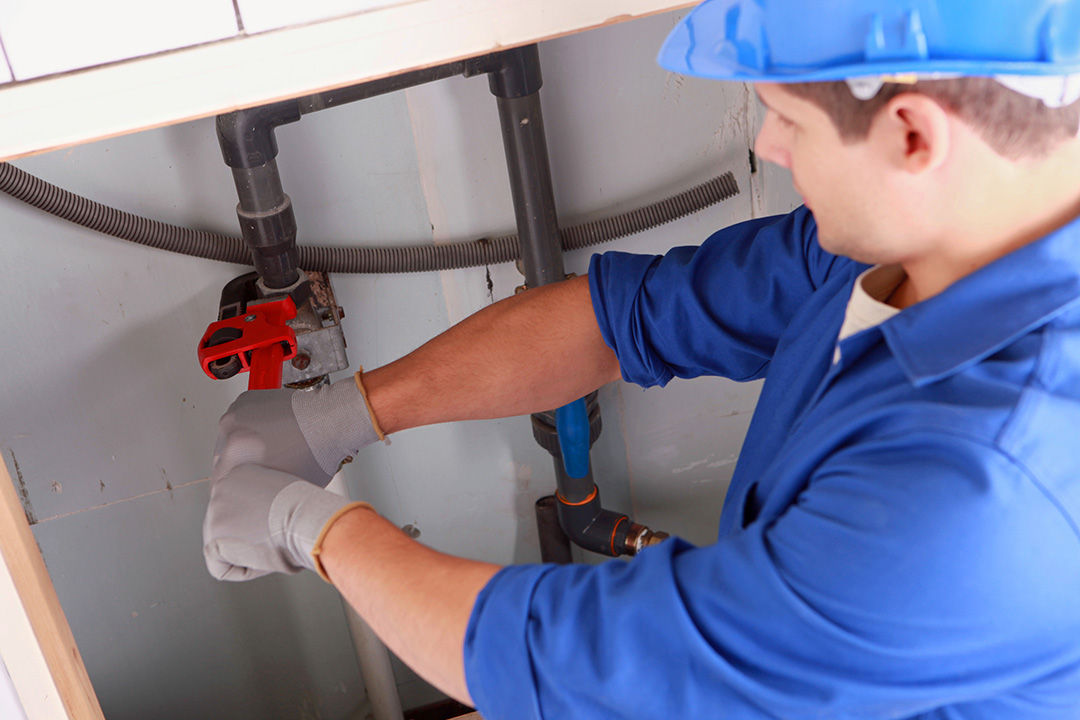If you’ve ever heard a loud banging or thumping sound coming from the walls, floor, or ceiling of your home while a faucet or shower is running or was just shut off, you’ve probably got a water hammer issue on your hands.
Water hammer describes an uneven and unsteady flow of water through pipes that results in a loud noise due to a “shockwave” effect. It’s usually caused when the direction or velocity of water suddenly changes when a faucet is turned on or off, causing a change in water pressure.
While water hammers initially start out as just loud noises inside your pipes, they can cause serious damage to your plumbing if they aren’t fixed soon after the problem begins.
Common Causes of Water Hammers
The vast majority of water hammers are caused by a few common factors, including:
- Vacuums created by valves closing
A vacuum can be created when an upstream valve in a pipe closes and the water downstream continues flowing. The vacuum can cause the pipe to collapse or even implode—especially if it’s a downhill pipe. - Waterlogged air chambers
Pipes are built with air chambers to act as cushions that will absorb the shock waves created by water that comes to a sudden stop. When those air chambers become waterlogged, there is no cushion left to prevent the shockwave from colliding with the interior of the pipes, resulting in a loud noise and potential damage. - Loose pipe-mounting straps
When pipes aren’t properly secured, you may hear the sound of water hammers as the movement of water and shockwaves cause them to jostle against framing and other structures in your walls, floor, and ceiling.
Tips for Stopping Water Hammers
If you begin hearing or feeling frequent water hammers in your home’s pipes, it’s important to act quickly to avoid potentially serious damage to your plumbing.
Some of the best ways to prevent and solve future water hammers include:
- Drain your pipes and refill them to create new air chambers
One method for eliminating water hammers is to create new air chambers that will serve as cushions for shockwaves. To do this, shut off your home’s main water valve, then open the highest faucet in your home. Next, turn on the lowest faucet in your home and keep it on until all water has drained. Finally, reopen the main water valve to refill your pipes. - Tighten mounting straps
If your water hammers are the result of loose straps, simply tighten them or replace them with new straps to hold your pipes in place. - Install a water hammer arrestor
In many cases, the solutions presented above will only temporarily fix the problem. If that’s the case in your home, you’ll need a water hammer arrestor. These devices are small air-filled pipes that screw onto tees that are soldered onto your pipes. They use a built-in piston to compress air to help reduce the shockwave created by closed valves.


